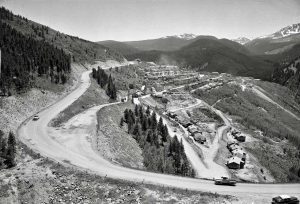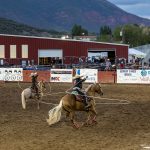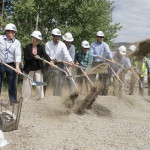Addicted in Aspen

ALL |
ASPEN – For 11 years, Jill Costigan was a regular in Aspen’s party scene. She spent practically all of her bartending income on drugs, grew gradually thinner from not eating, and ended up homeless.What finally stopped her heavy cocaine use one day six years ago was finding a hole in the roof of her mouth. Roughly the size of a pencil eraser, the hole connected to her nasal passage and was the result of steady cocaine use.Her nose had long since collapsed from drug use, splaying across her face, and while she didn’t care so much about her appearance, with the hole in her mouth, Costigan had a hard time speaking. Scared, she called her doctor.A nurse told her over the phone that the hole was from the nasal ingestion of cocaine and if she continued to use the drug she was going to die.”I knew for a long time I was killing myself with drugs – I was never in denial about being an addict,” Costigan says. “It was fine. It was the way I lived, the way I was.”It’s a side of Aspen that appears only now and then in headlines – a drug-related arrest, an overdose, or people who take their own lives out of perceived hardship. But what many never hear are the stories of just how desperate, how ugly a situation can become before it gets better, if it gets better at all.A steady declineCostigan’s drug use began with pot in sixth grade, when she was growing up in a rural community in Maine. As a senior in high school she started using cocaine and tried hallucinogenic mushrooms and acid. Although she was often stoned in class, she was also a good student – her drug use was never detected by teachers or her parents.While working as a cocktail waitress to pay her way through college, Costigan balanced her mood with cocaine and alcohol. Seventeen years ago she moved to Aspen, working at clubs at night and skiing during the day. She said she would buy a half a gram of cocaine on Friday night to split with someone else – a very small amount.
“I was healthy and enjoying my life in Aspen,” she says. “I never felt I had to control (the cocaine use), and then I had a gradual progression that kind of took me by surprise.”Year by year, she found herself spending more money on cocaine and less on ski passes, housing and food. Her jobs were steadily going downhill, from upscale clubs to some of Aspen’s seedier bars. Her co-workers and local police, who regularly patrol local bars, could see that.Costigan had a problem, as she was getting thinner and acting frenetic.”If I had $40 to my name and my rent was due, I could save for rent or I could buy drugs,” she says. “Am I going to buy food or buy drugs? If I buy drugs, I don’t need food.”After losing her housing, she began couch-surfing, spending the nights at the homes of other addicts or drug dealers where she often stole their drugs.One night in 1998 she found herself standing outside City Market at 2 a.m. and realized she had no place to stay, having alienated even the drug dealers because of her thievery. She wound up at a crack house in town where other addicts were living, a filthy home where people would come and go, and a garden hose and a bathtub served as the shower.”I worked at the Roaring Fork Tavern, and since I had the keys, I had a reason to be there,” she said. “I would look at the people on barstools there all day and say, ‘Look at these lowlifes.’ Not until I got clean did I realize I was one of them.”Costigan stopped using cocaine when the hole on the top of her mouth, in her soft palate, appeared. At the time, she hoped the hole was caused from cancer, because then she could get treatment and continue using drugs. Instead, she was forced to face the end of her drug use.Now sober for six years, Costigan is a deputy at the Pitkin County Jail. She also counsels young people dealing with substance abuse and sometimes finds herself finger-printing the same people she used to run with.She laughed the first day she put on a badge, and she said she commented to a police officer who knew her in the depths of her addiction, “You’re surprised to see me wearing this badge.””I’m just surprised to see that you lived,” he replied.
Drinking to oblivionTrisha, whose name has been changed to protect her identity, first started drinking when she was 13. She grew up in Aspen but discovered alcohol and drugs when she was in boarding school.”I felt like I didn’t fit in when I was growing up,” she said. “I went to school in Denver, and one night on this tennis court with some girls they were passing around a bottle of vodka. I took a big hit off of it, and a warm glow came over me. I knew that very minute that that was it, I was home.”Trisha regularly drank to oblivion, blacking out while drinking with friends and waking up hours – or even days – afterward. She also discovered drugs, taking white crosses – “an old-fashioned speed that was a white pill with crosses on them” – when she was 14.A little later she became prone to traveling and doing strange things while blacked out from drinking. She once started drinking in New York and found herself on a yacht in Puerto Rico with a guy named Pablo, whom she didn’t recognize, she says.Another time she emerged from a blackout at the Denver Stock Show, having just purchased an expensive cow, she says. “A lot of times I was in desperate fear,” she says. “I didn’t know who I was with or where I was.”But Trisha kept drinking and became a “garbage head,” looting her mother’s medicine cabinet for pills or asking guests to share their drugs by dropping their drug of choice in the bowl on her kitchen counter.Trisha became a regular at the Aspen bars and lived with her parents, selling drugs out of their guest home. She would come home at 7 a.m. after being out all night and join her family for breakfast.”You can imagine how I must have stunk. I was the elephant in the room,” she said. “My parents were in vast denial.”
As a side effect of methamphetamines, Trisha developed a heart-shaped sore on her face that wouldn’t heal. She wondered if she would live to 25, and when she did, she wondered if she would make it to 30. Many of her friends died as a result of substance abuse and risky lifestyles.”We seek the lower life, or at least I did – people who were uglier than me and drank worse than me in order to feel better about myself,” she said.A family member finally hinted to Trisha they were ready to stage an intervention in order to get her into treatment. But being stubborn, Trisha, then 34, decided to check into a center immediately to beat her family to the punch.She said she couldn’t understand why as a strong-willed person she couldn’t stop drinking or using drugs – she decided she might be crazy. Recovery programs taught her about having a disease and introduced her to others with similar problems.After the treatment center she went to a halfway house, and now, after 16 years, she is still sober.”I am completely powerless over alcohol, and I know where drugs and alcohol take me,” she said. “I took from the community for years – the way I behaved. I was not a private drunk. I was out in the bars and driven home by police, and humiliated my parents.”Trisha is giving back by being involved with The Right Door, an Aspen nonprofit that helps substance abusers find counseling and support.”I stay sober one day at a time, and that’s what makes this possible,” she said. “It’s a miracle.”Vail, Colorado










